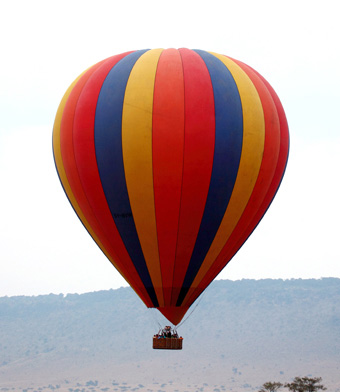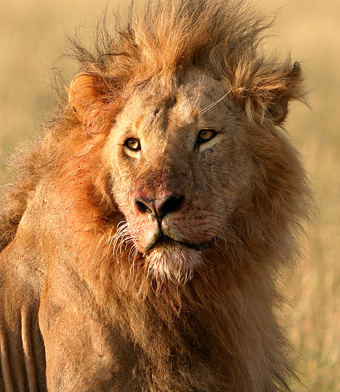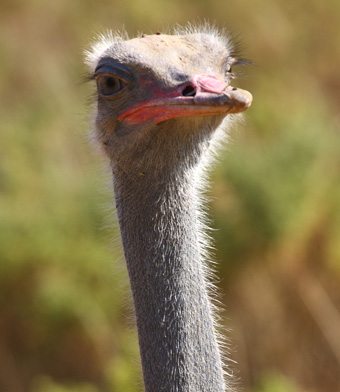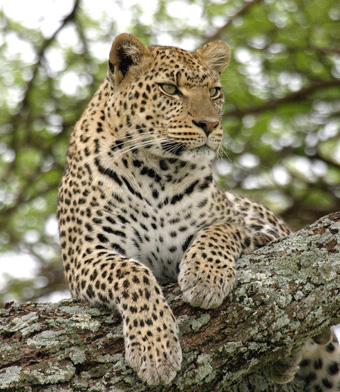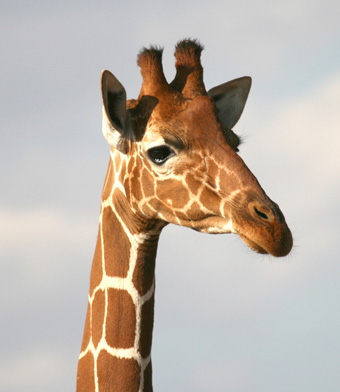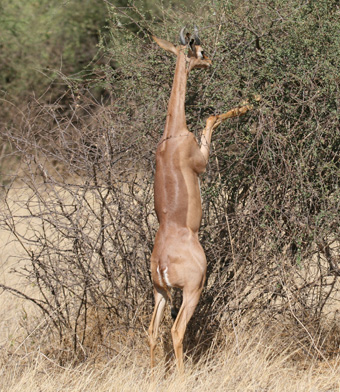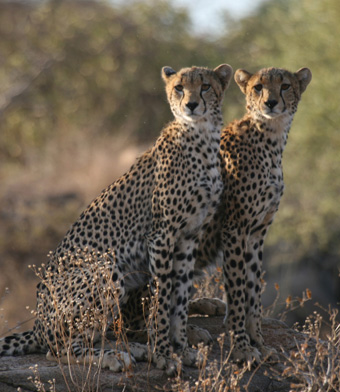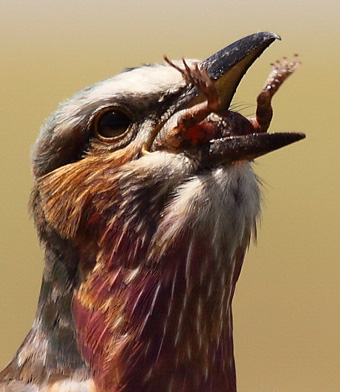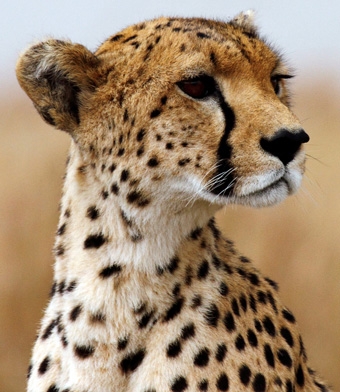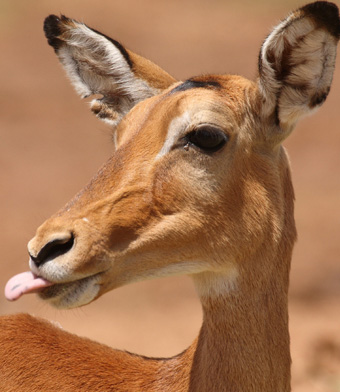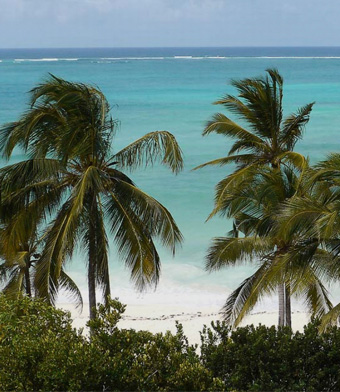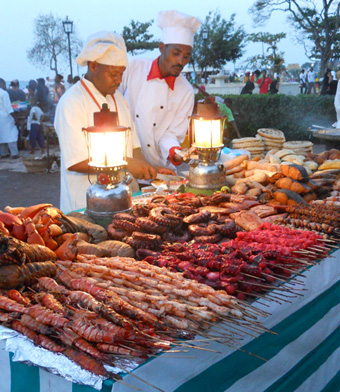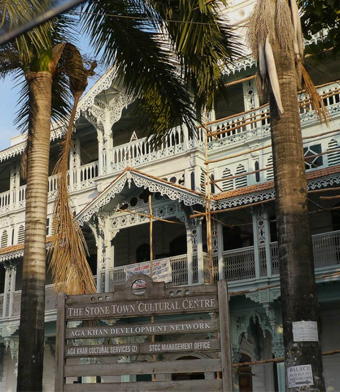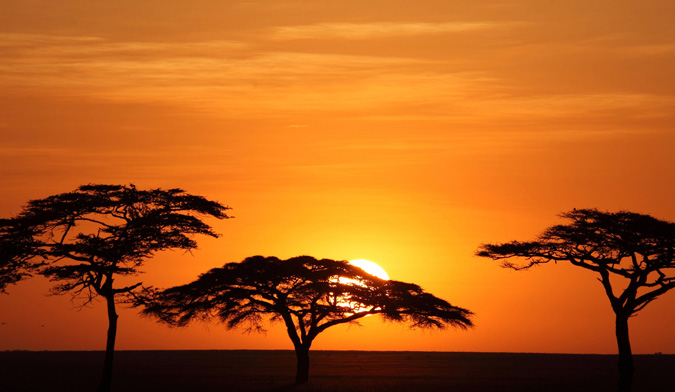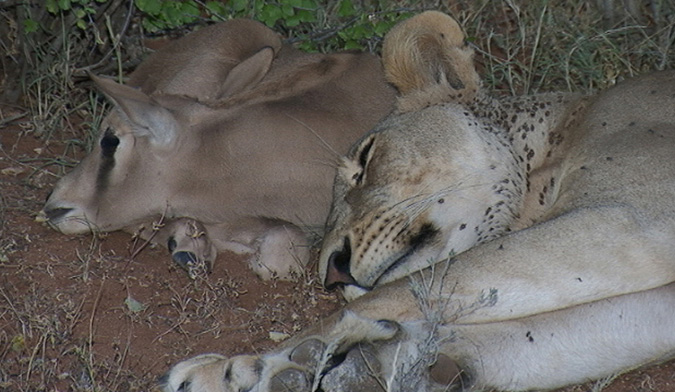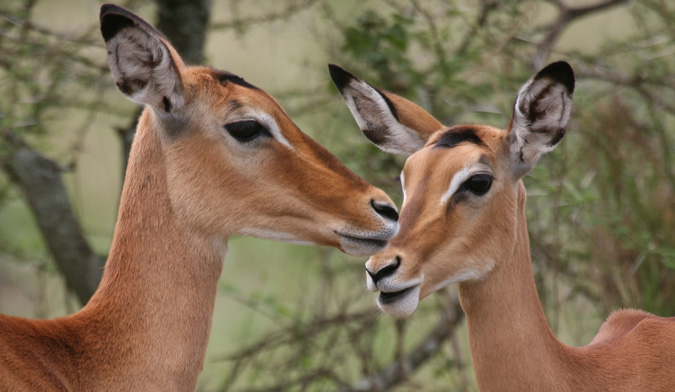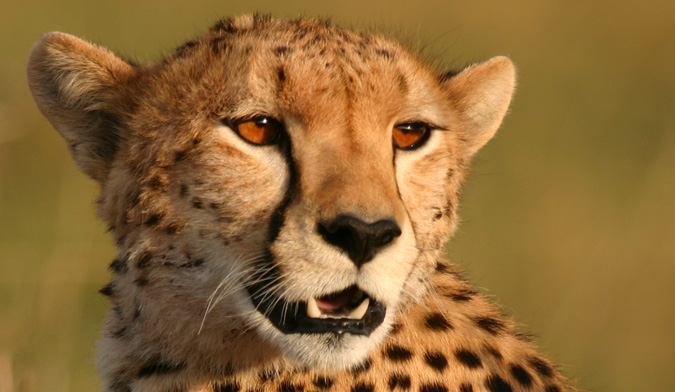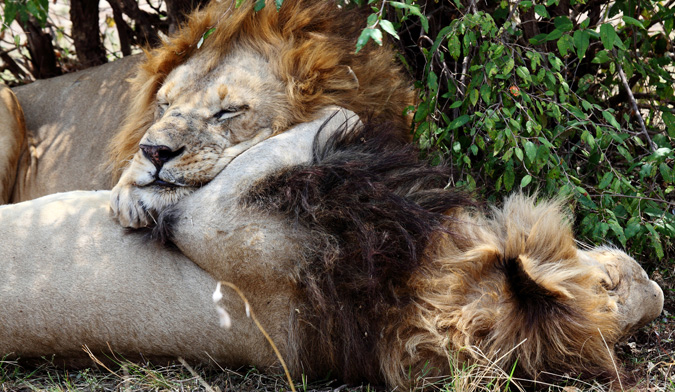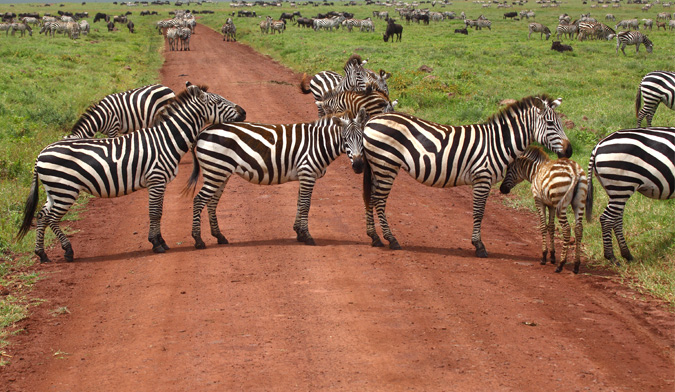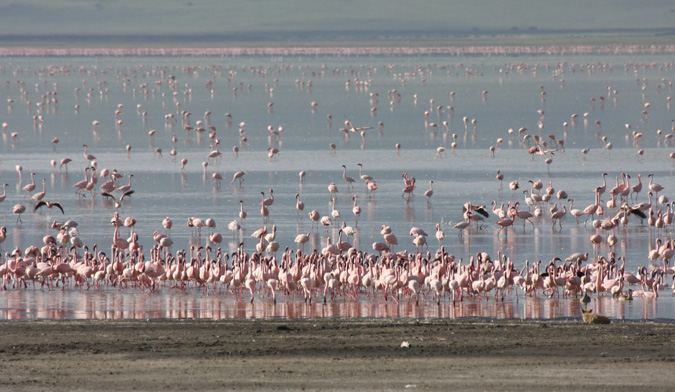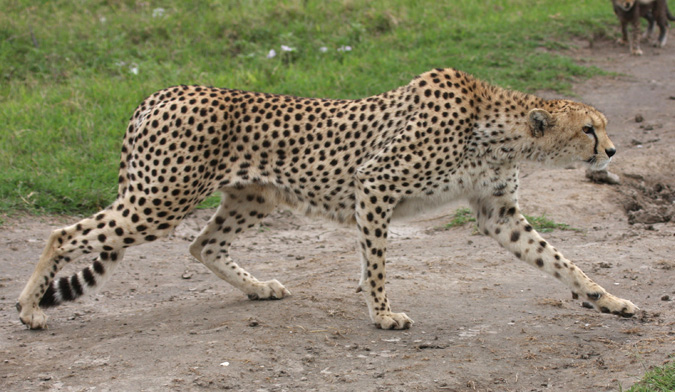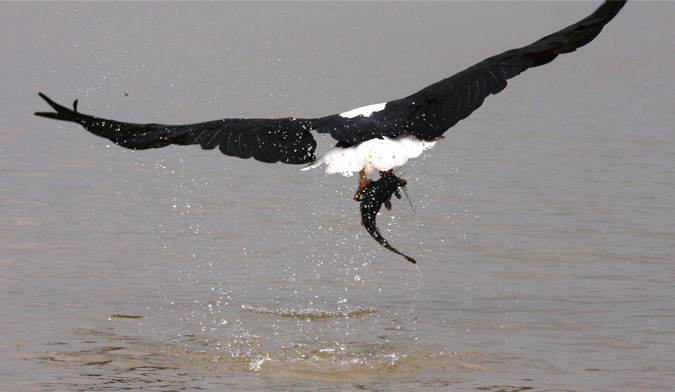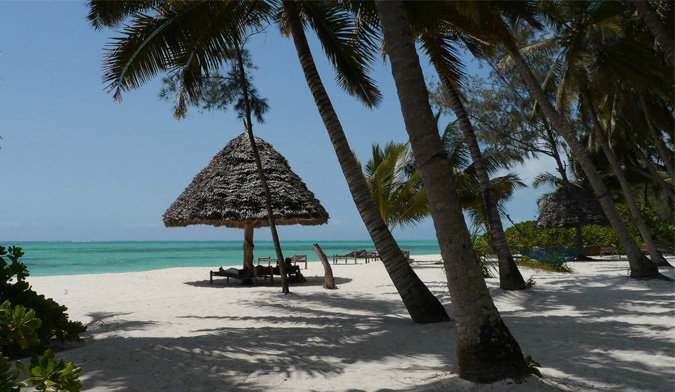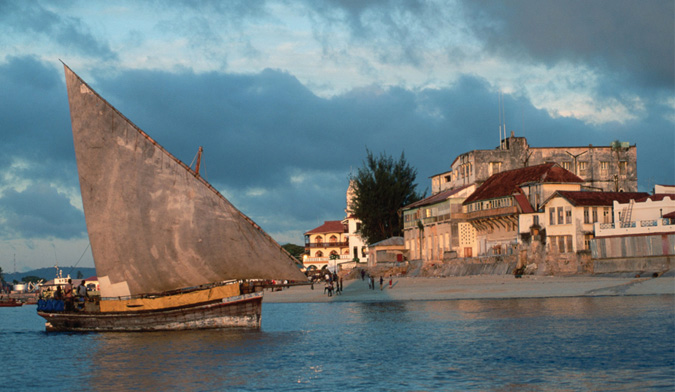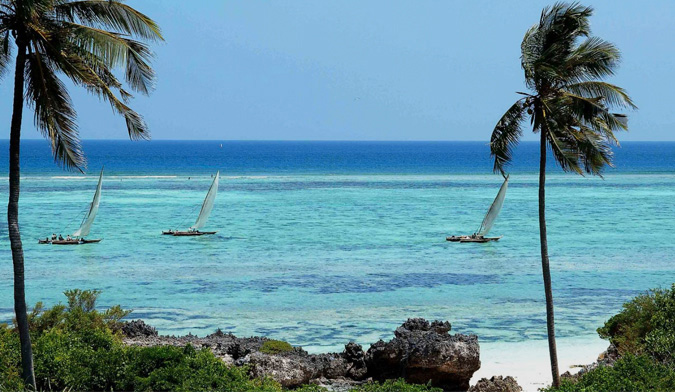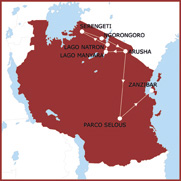 |
duration 14 nights - 14 and a half days place of departures hotel in Arusha reference route KS2145 departure day daily on request transport landcruiser 4x4 |
|
- itinerary
- tariff
- lodges
- parks
Day 1 Arusha - Lake Manyara - 120 km / 2h00 approximately
After lunch-not included-depart from Arusha to Lake Manyara on a good road that passes through wonderful scenery. On arrival at the gate, start your first game drive in this park holding a large variety of vegetation, animals and birds. In the late afternoon depart for the camp. Dinner and overnight at Migunga Tented Camp.
Day 2 Lake Manyara - Lake Natron - 120 km / 5h approximately
After an early breakfast, drive north to Lake Natron. To give flexibility, you will have a picnic lunch with you. This is a drive passing through amazing scenery of mountains and plains, with a scattering of wildlife plus seeing the Maasai with their herds of cattle and goats. Dinner and overnight at Lake Natron Camp.
Day 3 Lake Natron
Full day dedicated to the excursions by the lake. These can be observing flamingos and other birds, walking by the lake with a guide, exploring waterfalls etc. There is plenty to do. Full board at Lake Natron Camp.
Day 4 Lake Natron - Serengeti Park - 375 / 8h00 approximately
After breakfast depart to Serengeti Park with a picnic lunch. Much of the route will be a game drive before arriving at camp in the late afternoon. Arrival for dinner and overnight at Ikoma Tented Camp.
Day 5 Serengeti Park
Full day of game viewing in the park. Full board Ikoma Tented Camp.
Day 6 Serengeti Park - Ngorongoro - 230 km / 4h30 approximately
After an early breakfast depart on a game drive heading to Ngorongoro. En route stop at Ol Duvai Gorge, famous for the discovery of early Hominid remains. There is a good small museum at the site. After your packed lunch, continue the game drive to your camp. Dinner and overnight at the Crater Forest Tented Camp.
Day 7 Ngorongoro Crater
In the morning, after breakfast, descend to the crater floor for a god day game drive with your picnic by a lake. Return in the evening to the lodge for dinner and overnight.
Day 8 Ngorongoro Crater - Arusha - 175 km / 3h circa - Selous Park
After breakfast, depart for Arusha arriving in the late morning.
From 12:00-14:00 –the time depending on the air company- board the flight to the Selous Park (cost of flight NOT included - approximately US $ 400 per person). On arrival you will be transferred to your camp. The rest of the afternoon can be enjoyed relaxing and enjoying the birdlife and peace of the bush. Dinner and overnight at Selous Wilderness Camp.
Day 9 Selous Park
Full day of game viewing in the park. Full board at Selous Wilderness Camp.
Day 10 Selous Park - Zanzibar
After breakfast, board the flight to Zanzibar (cost of flight NOT included - approximately US $ 200 per person), arriving at the airport and transfer to the Stone Town. Free time to explore the arrow streets of this ancient Arab town. Overnight at Swahili House.
Day 11 Zanzibar
After breakfast transfer to the beach. Dinner and overnight at the Fumba Beach Lodge.
Day 12 Zanzibar
Day dedicated to beach activities. Dinner and overnight at the Fumba Beach Lodge.
Day 13 Zanzibar
Day dedicated to beach activities. Dinner and overnight at the Fumba Beach Lodge.
Day 14 Zanzibar
After breakfast transfer to the airport of Zanzibar.
Prices are per person for the entire route
from 16 december 2014 to 31 december 2015
Basic fee for 2/3 persons:
prices from US$ 4.290 per person in a doube room
Basic fee for 4/5 persons:
prices from US$ 3.480 per person in a doube room
Basic fee for 6/7 persons:
prices from US$ 3.210 per person in a doube room
approximate price flight Arusha / Selous - US$ 490 taxes included
approximate price flight Selous / Zanzibar - US$ 240 taxes included
The safaris are conducted on an individual basis. But on occasions you could consolidate the departure with other customers, the first to have booked will give their consent and will be charged the actual occupation of the machine.
The safaris are guaranteed with a minimum of two people from 16/12/2013 to 31/03/2014 and from 01/07/2014 to 31/10/2014 and with a minimum of four people from 01/04/2014 to 30 / 06/2014 from 01/11/2014 to 15/12/2014.
The guarantee of a seat is always subject to availability of space in the car and lodges indicated in the itinerary. It may be necessary to reverse the parks in the itinerary without, however, changing its quality.
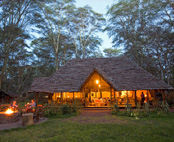 |
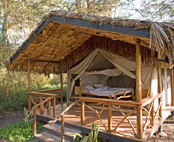 |
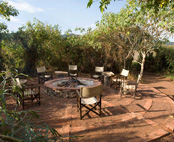 |
Migunga tented camp
The Migunga Tented Camp, nestled in a quiet corner of 35 acres of acacia forest, is located just 5 minutes from the entrance to Lake Manyara National Park, a paradise for birds.
The 19 tents are permanent, semi-luxury and built on raised platforms with attached bathrooms and private veranda. All tents are arranged around a central clearing, offering shade and privacy.
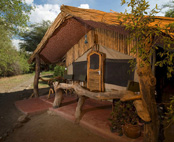 |
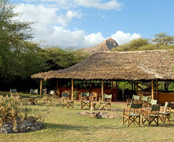 |
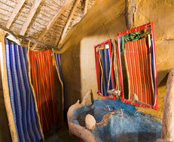 |
Lake Natron Camp
Unique in its surroundings, Lake Natron Camp consists of nine cottage-tents, each equipped with a bathroom with running water and private veranda to relax and enjoy the surrounding landscape.
Nearby is the only active volcano, the Ol Donyo Lengai (Mountain of God), a mountain sacred to the Maasai. If you wish, you can climb with an experienced local guide (1 Day). A unique experience, very tough physically, but you do not need special equipment, only good shoes. It is mostly done at night.
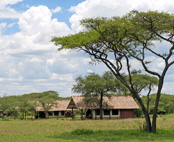 |
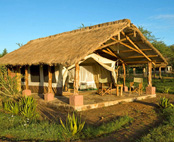 |
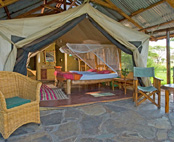 |
Ikoma Tented camp
Located in the midst of an incredible view of the savannah and the sky, in an ideal location along the route of the wildebeest migration, the camp is located on the border of the famous Serengeti National Park. Each tent has its own bathroom and a private veranda and is furnished in modern style. The central restaurant and bar offer a large fireplace, a great place to relax with a drink after a long exciting day.
The camp, being located just outside the border of the national park, you can do night drives and guided walks.
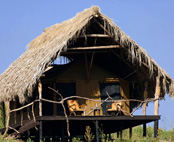 |
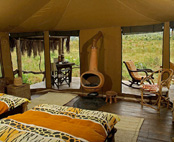 |
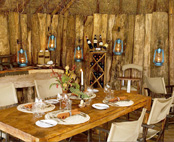 |
Crater Forest Tented camp
Founded on a coffee plantation at an altitude of 1,800 meters above sea level, the lodge is set in an area directly bordering the Ngorongoro crater.
You can arrange to see how coffee is grown, harvested and processed.
The lodge is managed as an "eco-lodge" built on platforms with a magnificent view over the forest of Ngorongoro. The 15 tents are spacious and all have a bathroom with a hot shower, fireplace and African-style veranda.
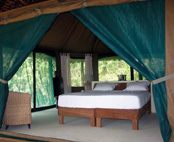 |
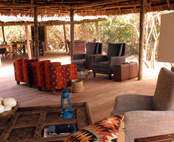 |
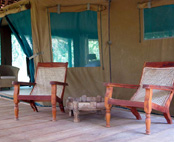 |
Selous Wilderness
With only 7 tents and a mixture of solid wooden furniture and leather sofas, the Selous Wilderness Camp offers privacy and exclusivity to its guests.
The camp is located in a remote area of the Selous Game Reserve, and consists of one family tent (triple), two tents for the honeymoon (with bathroom and outdoor shower), 2 double and 2 twin tents, all very spacious, with private bathroom and overlooking the Rufiji River. The distance between a tent and the other is 20 meters so as to ensure the privacy of its customers.
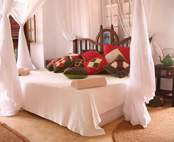 |
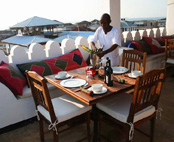 |
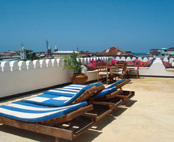 |
Swahili House
Located in the heart of Stone Town the building was originally set up and used as a house of an Indian merchant in the 19th century. Renovated in 2008, the hotel has been restored with traditional influences, but with modern facilities.
Swahili House has 5 floors which are all built around a beautiful traditional Zanzibari courtyard. The floors are accessible with elevators or stairs.
The 22 rooms, all furnished in Swahili style, are spread over 4 floors and can be divided into three different categories:
The Sultan Suite: large and spacious with balcony.
Deluxe rooms: with dimensions of a standard double or twin room.
Suite: spacious with a medium-sized balcony.
On the roof is a spectacular terrace with a bar, a restaurant and sun deck that overlooks the Indian Ocean.
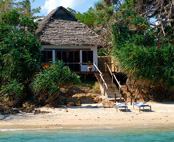 |
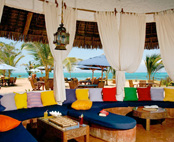 |
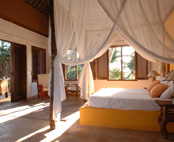 |
Fumba Beach Lodge
Is located on one of the most beautiful secluded beaches in Zanzibar. This lodge is a luxurious and tranquil retreat, offering a perfect blend of casual elegance and friendly first class service. Just 30 minutes south-west of Stone Town, Zanzibar. With its magnificent architecture and and historic atmosphere, the lodge is hidden and well away from the crowds, making it the perfect place to enjoy the peace and tranquillity of this tropical paradise.
It only has 26 rooms, all scattered in the woods, in the shade of trees and the magnificent baobabs. Each room has a private terrace with breathtaking ocean views.
Manyara Park
Stretching for 50km along the base of the rusty-gold 600-metre high Rift Valley escarpment, Lake Manyara is a scenic gem, with a setting extolled by Ernest Hemingway as “the loveliest I had seen in Africa”.
The compact game-viewing circuit through Manyara offers a virtual microcosm of the Tanzanian safari experience.
From the entrance gate, the road winds through an expanse of lush jungle-like groundwater forest where hundred-strong baboon troops lounge nonchalantly along the roadside, blue monkeys scamper nimbly between the ancient mahogany trees, dainty bushbuck tread warily through the shadows, and outsized forest hornbills honk cacophonously in the high canopy.
Contrasting with the intimacy of the forest is the grassy floodplain and its expansive views eastward, across the alkaline lake, to the jagged blue volcanic peaks that rise from the endless Maasai Steppes.
Buffalo, wildebeest and zebra herds congregate on these grassy plains, as do giraffes – some so dark in coloration that they appear to be black from a distance.
Inland of the floodplain, a narrow belt of acacia woodland is the favoured haunt of Manyara’s legendary tree-climbing lions and impressively tusked elephants. Squadrons of banded mongoose dart between the acacias, while the diminutive Kirk’s dik-dik forages in their shade. Pairs of klipspringer are often seen silhouetted on the rocks above a field of searing hot springs that steams and bubbles adjacent to the lakeshore in the far south of the park.
Manyara provides the perfect introduction to Tanzania’s birdlife. More than 400 species have been recorded, and even a first-time visitor to Africa might reasonably expect to observe 100 of these in one day. Highlights include thousands of pink-hued flamingos on their perpetual migration, as well as other large waterbirds such as pelicans, cormorants and storks.
Serengeti National Park
Great stretches of Africa in 1913 were still unknown to the white man when Stewart Edward White, an American hunter, set out from Nairobi. Pushing south, he recorded: "We walked for miles over burnt out country... Then I saw the green trees of the river, walked two miles more and found myself in paradise."
He had found the Serengeti. In the years since White's excursion under "the high noble arc of the cloudless African sky," Serengeti has come to symbolize paradise to many of us. The Maasai, who had grazed their cattle on the vast grassy plains for millennia had always thought so. To them it was Siringitu - "the place where the land moves on forever."
Tanzania's oldest and most popular national park, also a world heritage site and recently proclaimed a 7th worldwide wonder, the Serengeti is famed for its annual migration, when some six million hooves pound the open plains, as more than 200,000 zebra and 300,000 Thomson's gazelle join the wildebeest’s trek for fresh grazing. Yet even when the migration is quiet, the Serengeti offers arguably the most scintillating game-viewing in Africa: great herds of buffalo, smaller groups of elephant and giraffe, and thousands upon thousands of eland, topi, hartebeest, impala and Grant’s gazelle.
The spectacle of predator versus prey dominates Tanzania’s greatest park. Golden-maned lion prides feast on the abundance of plain grazers. Solitary leopards haunt the acacia trees lining the Seronera River, while a high density of cheetahs prowls the south-eastern plains. Almost uniquely, all three African jackal species occur here, alongside the spotted hyena and a host of more elusive small predators, ranging from the insectivorous aardwolf to the beautiful Serval Cat.
But there is more to the Serengeti than large mammals. Gaudy agama lizards and rock hyraxes scuffle around the surfaces of the park’s isolated granite kopies. A full 100 varieties of dung beetle have been recorded, as have 500-plus bird species, ranging from the outsized ostrich and bizarre secretary bird of the open grassland, to the black eagles that soar effortlessly above the Lobo Hills.
As enduring as the game-viewing is the liberating sense of space that characterises the Serengeti Plains, stretching across sunburnt savannah to a shimmering golden horizon at the end of the earth. Yet, after the rains, this golden expanse of grass is transformed into an endless green carpet flecked with wildflowers. And there are also wooded hills and towering termite mounds, rivers lined with fig trees and acacia woodland stained orange by dust.
Popular the Serengeti might be, but it remains so vast that you may be the only human audience when a pride of lions masterminds a siege, focussed unswervingly on its next meal.
Perhaps Dr. George Schaller best encapsulates the Serengeti when he wrote: "Yearning for hope and thriving on dreams, we find what we seek in the Serengeti. At least once in a lifetime every person should make a pilgrimage into the wilderness to dwell on its wonders and discover the idyll of a past now largely gone. If I had to select just one such spot on earth, it would be the Serengeti. There dwell the fierce ghosts of our human past, there animals seek their destiny, living monuments to a time when we were still wanderers on a prehistoric earth. To witness that calm rhythm of life revives our worn souls and recaptures a feeling of belonging to the natural world. No one can return from the Serengeti unchanged, for tawny lions will forever prowl our memory and great herds throng our imagination."
George Schaller. Wildlife Conservation International. Excerpts from.
Conservation Area of Ngorongoro Crater
After winding up through the rain forest on a snaking road and cresting the Crater Rim, the view is breathtaking. Beneath you the entire crater can be seen 600 metres below.
This crater should correctly be called a caldera, when a volcano grows to a great height before collapsing, leaving a crater. This small world of animals has rightly earned a reputation as one of nature’s wonders. It holds as many as 50,000 animals living in a balanced ecosystem of 250 square kilometres. You will see almost every animal from enormous elephants, rhinos, hippos, many species of antelope, lions, leopards, cheetah and much more. There is a large variety of vegetation to enjoy from the verdant rain forests clothing the surrounding rim to the swamps, soda and clear water lakes, expansive plains and soda pans on the crater floor. With a picnic, you can spend the entire day or afternoon in this wonderland holding more ungulates and carnivores per square kilometre than anywhere else in the world.
The area (8,228 sq. Km) extends out from the crater and includes vast plains and the famous Olduvai Gorge, where the Leakey family discovered some of the oldest fossil bones of our ancestors.
In this vast area there are other craters, such as Olmoti, Lake Empakaai Crater, Mount Oldonyo Lengai and the Gol Mountains, offering those who want to venture into this wilderness for an exciting "off road" experience. A choice to suit all tastes.
Lake Natron
Lake Natron is a saline lake located in northern Tanzania in the Great Rift Valley about 600 meters above sea level. It close to the Kenyan border. To the south west of its shoreline rises Mount Gelai populated with wildlife. The lake that barely reaches three feet deep and its width varies according to the rainy seasons. Because of algae and tiny bacteria and being a soda lake it has a wide range of colours from reds and browns to bright white of the dried soda. Over multiple cycles of being filled from the season rivers and evaporation it now holds a lot of soda and the change in the salinity to a point such that colonies of microorganisms begin rapidly to thrive. These microorganisms include cyanobacteria, tiny bacteria that grow in aquatic environment drawing nourishment from sunlight with a procedure similar to the photosynthesis of plants. These bacteria contain a pigment responsible for the colour of bright red Lake Natron, however, assumes that tonal variations tending to orange in the parts where the water is less deep. In addition to these bacteria, the only living being that can survive in its waters is the flamingo, thanks to a protective layer of horny beak and legs: in fact the water of this lake is not only undrinkable, but also for the extremely caustic skin.
It is the main breeding ground for the Lesser Flamingo and in certain times of the year you can see literally thousands upon thousands incubating their eggs on small mounds of mud looking like masses of upturned pots. Overseas companies are trying to get permission to mine the soda which must be halted at all costs. It is a vital area ecologically and there are other locations where soda can be collected.
Selous Game Reserve
The Selous Game Reserve, one of the largest wildlife areas in the world, was created for the conservation of flora and fauna in conjunction with human activity. It is roughly on measures 50,000 km² of endless wilderness. This, combined with the lack of mass tourism within the reserve, guarantees visitors a truly extraordinary experience. The tourist area of the reserve is located north of the Rufiji River and contains all the various forms of vegetation that can be found throughout the reserve which offers a whole range of habitats from the mountains to the west which tumble in hills and valleys to the lower flatter plains and bush where most of the camps are found overlooking the wide winding Rufiji River. The reserve, being so huge, supports a wide variety of animals from countless herds of elephant, and buffalo to lions, leopards, cheetahs, jackals, the Cape Hunting Dog, rhino and many other species, including the rare Sable Antelope. Also because it bridges the northern and southern hemispheres provides a staggering range of bird species. It is a wilderness that can be harsh and endless but you will forever remember it with nostalgia.
